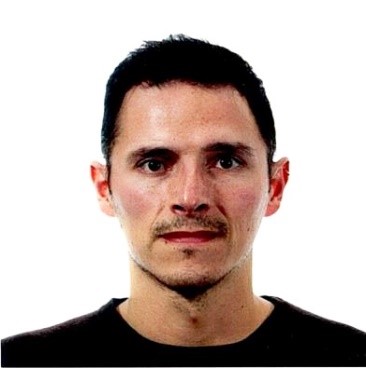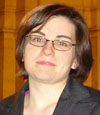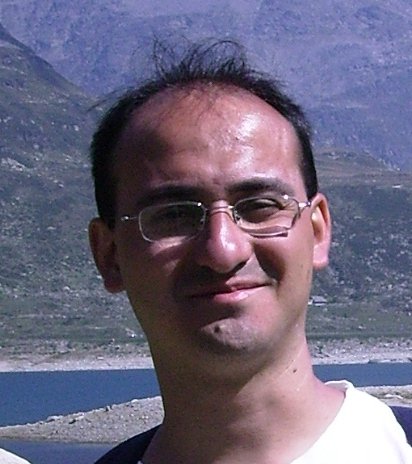Studying at the University of Verona
Here you can find information on the organisational aspects of the Programme, lecture timetables, learning activities and useful contact details for your time at the University, from enrolment to graduation.
Academic calendar
The academic calendar shows the deadlines and scheduled events that are relevant to students, teaching and technical-administrative staff of the University. Public holidays and University closures are also indicated. The academic year normally begins on 1 October each year and ends on 30 September of the following year.
Course calendar
The Academic Calendar sets out the degree programme lecture and exam timetables, as well as the relevant university closure dates..
| Period | From | To |
|---|---|---|
| I semestre | Oct 1, 2024 | Jan 31, 2025 |
| II semestre | Mar 3, 2025 | Jun 13, 2025 |
Exam calendar
Exam dates and rounds are managed by the relevant Science and Engineering Teaching and Student Services Unit.
To view all the exam sessions available, please use the Exam dashboard on ESSE3.
If you forgot your login details or have problems logging in, please contact the relevant IT HelpDesk, or check the login details recovery web page.
Should you have any doubts or questions, please check the Enrollment FAQs
Academic staff
 rosanna.laking@univr.it
rosanna.laking@univr.it
Study Plan
The Study Plan includes all modules, teaching and learning activities that each student will need to undertake during their time at the University.
Please select your Study Plan based on your enrollment year.
1° Year
| Modules | Credits | TAF | SSD |
|---|
Algebra lineare e analisi
2° Year It will be activated in the A.Y. 2025/2026
| Modules | Credits | TAF | SSD |
|---|
3° Year It will be activated in the A.Y. 2026/2027
| Modules | Credits | TAF | SSD |
|---|
| Modules | Credits | TAF | SSD |
|---|
Algebra lineare e analisi
| Modules | Credits | TAF | SSD |
|---|
| Modules | Credits | TAF | SSD |
|---|
| Modules | Credits | TAF | SSD |
|---|
1 module among the following (Discrete Biological Models 2nd year, other modules 3rd year)1 module among the following (Elements of physiology and Biophysics 2nd year, Model organism in biotechnology research and Molecular biology laboratory 3rd year)Legend | Type of training activity (TTA)
TAF (Type of Educational Activity) All courses and activities are classified into different types of educational activities, indicated by a letter.
Elements of Chemistry - ELEMENTI DI CHIMICA ORGANICA (2024/2025)
Teaching code
4S003712
Teacher
Credits
6
Language
Italian
Scientific Disciplinary Sector (SSD)
CHIM/06 - ORGANIC CHEMISTRY
Period
II semestre dal Mar 3, 2025 al Jun 13, 2025.
Courses Single
Authorized
To show the organization of the course that includes this module, follow this link: Course organization
Program
- Bond angles and carbon hybridisations, polarity of the molecules in relation to the electronegativity of the atoms of the molecule, the concept of resonance and different ways of representing the bonds, representation of the electron displacement in a reaction.
- Acids and bases in organic chemistry: definitions according to Bronsted / Lowry and Lewis, how to predict the strength of an acid and the equilibrium position in an acid-base reaction, the relationship between molecular structure and acidity (resonance and relocation of the charge, inductive effect and electronegativity).
- Saturated hydrocarbons: alkanes and cycloalkanes, nomenclature and structure, mention of combustion reaction and radical substitution, constitutional isomerism of alkanes, cis-trans isomers of cycloalcans, chair and boat conformations, equatorial and axial substitutions.
- Unsaturated hydrocarbons: alkenes and alkynes, nomenclature, structure, characteristic reactions of alkenes: addition reactions and Markovnikov’s rule, regioselectivity, hydro-halogenation, hydration, halogenation, hydrogenation.
- Chirality of the molecules: stereoisomers, enantiomers, diasteroisomers, optical activity and R / S configuration of a stereocentre, meso compounds and racemic mixtures, polarimeter and polarized light.
- Alogenoalcans: nomenclature, structure, nucleophilic substitution and elimination reactions. Mechanisms SN1, SN2, E1, E2, stability of exiting groups, relative efficacy of nucleophiles, stability of carbocations, solvent effect, differences between intermediate and transition states, competition between nucleophilic substitution and elimination reactions, energy diagrams of a reaction.
- Alcohols, phenols, ethers and thiols: structure, nomenclature and chemical properties, oxidation and dehydration reactions, secondary and tertiary primary alcohols, acidity comparisons.
- Benzene and aromatic compounds: resonance and Huckel's rule, nomenclature and structure, aromatic molecules of biological interest. General overview of reactions (aromatic electrophilic substitution)
- Aldehydes, ketones: nomenclature and structure, physical properties, reactivity, reduction and oxidation of aldehydes and ketones, nucleophilic addition, reaction with Grignard reagents, formation of emiacetals and acetals, formation of an immine from an aldehyde or ketone, keto–enol tautomerism, alpha-substitution reactions, acidity, condensation reactions.
- Amine: nomenclature, basicity.
- Carboxylic acids and derivatives: nomenclature, structure, properties and acidity, acyl nucleophilic substitution, Carboxylic acids derivatives reactivity, amide bond properties, thioester and acyl phosphate.
- Carbohydrates: classification and configuration, mutarotation, reducing sugars, Fischer and Haworth projections, disaccharides and polysaccharides of biological interest.
- Lipids: Classification and structure of fatty acids, phospholipids, prostaglandins, terpenoids and steroids.
- Amino acids: structure, basic-acidity properties, isoelectric point determination, overview on the protein structural characteristics, polypeptide bond, secondary structure.
- Nucleic Acids: DNA RNA, nucleosides and nucleotides, overview on DNA transcription and translation.
- Software for bi and three-dimensional visualization of the structures of organic molecules, molecular representation systems.
- Codes for molecules representation used in databases.
Bibliography
Didactic methods
The teacher will use frontal lessons.
Learning assessment procedures
Written exam: 6 exercises, available time 1 and a half hours.
The obtained grade will be averaged with the one obtained in the module of "General Chemistry Elements"
The exam consists of a written verification of the level of knowledge acquired on organic chemistry. The student should be able to correctly represent the molecules using the conventions in use, recognize isomers, identify reactive groups, and describe in detail the reaction mechanisms. It is moreover verified the knowledge of molecule codes used in databases.
The test consists of a written exam divided into six open-ended exercises (time available 90 minutes). The final grade is given by the sum of the scores obtained in the individual exercises. If the outcome of the written exam is ≥ 16/30 it is possible to scheduled the oral exam.
Evaluation criteria
Ability to organize knowledge.
Ability to think critically and to solve exercises on the proposed topics
Exam language
italiano
Type D and Type F activities
Modules not yet included
Career prospects
Module/Programme news
News for students
There you will find information, resources and services useful during your time at the University (Student’s exam record, your study plan on ESSE3, Distance Learning courses, university email account, office forms, administrative procedures, etc.). You can log into MyUnivr with your GIA login details: only in this way will you be able to receive notification of all the notices from your teachers and your secretariat via email and soon also via the Univr app.
Tutoring faculty members
Graduation
Attendance
As stated in the Teaching Regulations for the A.Y. 2022/2023, attendance at the course of study is not mandatory.
Career management
Student login and resources
Erasmus+ and other experiences abroad
Laboratori
I laboratori

 045 802 7823
045 802 7823



























